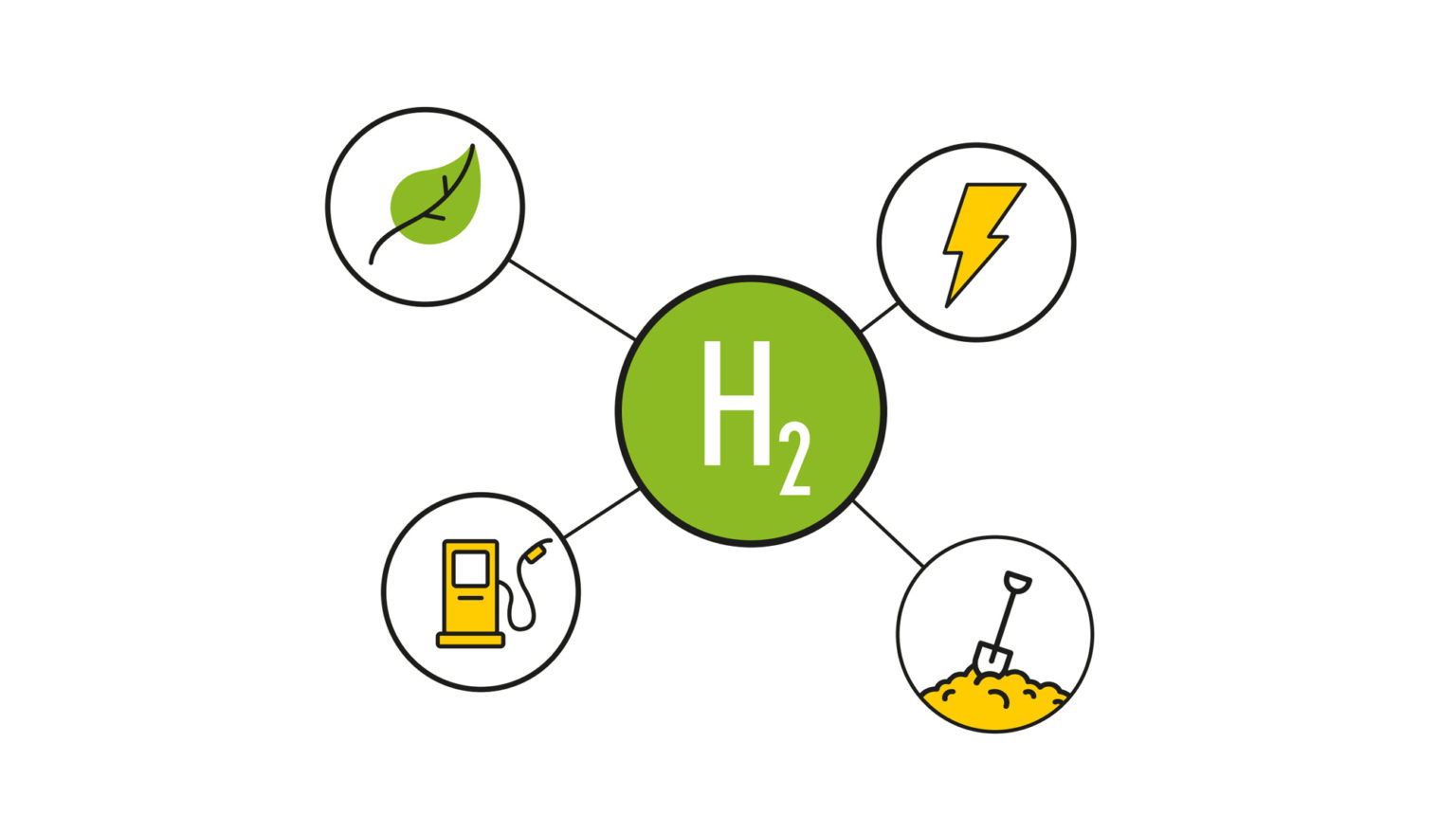Hydrogen – the most abundant element in our universe – is a harmless gas that can be converted into electricity, without CO2 emissions. The gas can also be used as energy to heat our homes, it serves as a basic ingredient in the chemical industry and it has a promising future as a clean fuel.
Energy is needed to produce hydrogen. There are three forms of hydrogen production. Currently, grey hydrogen is produced from methane. This process releases CO2, so this hydrogen does not contribute to reducing carbon dioxide emissions. Blue hydrogen is the light version of this energy carrier. Methane is also needed for this production process, only the released CO2 is stored underground. In addition to the fact that we are still 'dependent' on fossil fuels, blue hydrogen requires a lot of storage space. That is why we are working hard on a more sustainable solution and the common energy end goal: green hydrogen.
For the production of green hydrogen, sustainable energy, such as wind and solar energy, is used. By electrifying water and splitting it into oxygen and hydrogen – this is called electrolysis – we create this energy container ourselves. When the (stored) hydrogen then comes into contact with oxygen again, energy is released. Energy that we can use in daily life. To heat our homes, charge phones, but also to drive trucks, for example. Do we extract hydrogen from water with sustainable electricity? Then we generate CO2-neutral energy, or green hydrogen! In addition to producing this sustainable energy via electrolysis, we can also make green hydrogen from biomass.

In order to achieve the climate goals that we as the Netherlands have set, energy transition is necessary. Sustainable energy systems and a circular, sustainable industry are indispensable in achieving an energy and CO2 neutral society in 2050. This requires a targeted approach to reducing CO2 emissions in the use of energy and raw materials, but production, transport and storage of energy must also be emission-free within this system. And hydrogen can play a leading role in this. After all, electrification or combustion of green hydrogen is energy-efficient and emission-free. The most important advantage of hydrogen is that the gas can be stored well and the generated energy does not have to be used immediately. In contrast to wind and solar energy, it can be stored. Do we need more power? Then we convert the stored hydrogen into energy.
Oil and gas extraction, wind energy, coal supply and the transport of biomass to the port of Amsterdam: North Holland North has played a key role in generating, processing, storing and transporting energy for many years. Experience that in various forms forms the solid foundation for growing into the most important hydrogen region in the Netherlands – and even a forerunner in Europe. The (old) gas and oil pipelines, which together form a complete network, are also suitable for transporting hydrogen gas with a few minor adjustments. With the available knowledge and the large-scale plans for more green energy, in the North Sea and on land, all lights are green to continue to improve, strengthen and optimise the sustainable energy system. For example, North Holland North once again the key in our hands. From natural gas to hydrogen gas; the climate of the future.